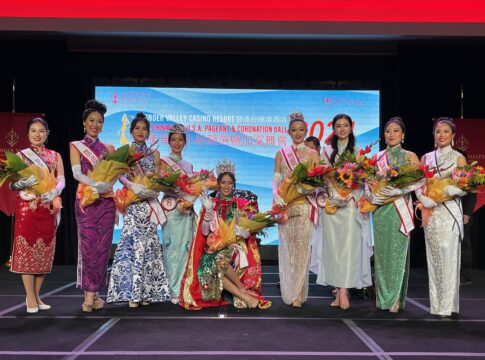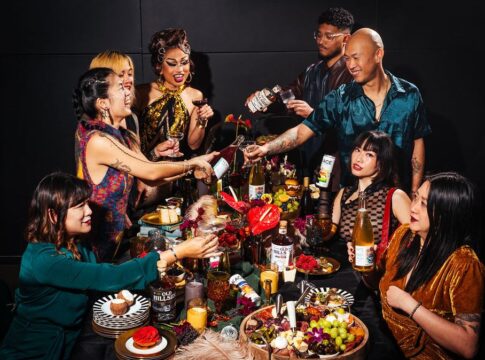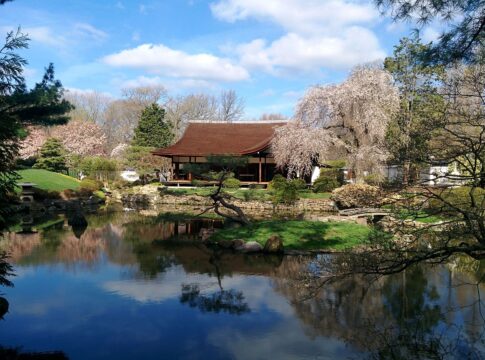
By Lia Chang
AsAmNews Arts and Entertainment Reporter
I had a surreal moment at the Smithsonian Asian Pacific American Center’s #WikiAPA Edit-a-thon when I walked to the front of the room and was greeted by my own Wikipedia page being edited in real time by someone in the room.

Since this was an evening focused on Wikipedia editing, dedicated to creating, updating, and improving articles about Asian Pacific American art and artists, it just goes to show you that we all could use a little improvement.

Adriel Luis, curator of Digital and Emerging Media for the Smithsonian Asian Pacific American Center; Ann Matsuuchi, instructional technology librarian and professor at LaGuardia Community College; and Nancy A. Bulalacao-Leung, co-founder of Filipino American Museum; were among the speakers in this evening hosted at the Museum of Modern Art in collaboration with Wikimedia NYC on Sept 2.

Upon my arrival, I was handed a Wiki markup cheatsheet for editing Wikipedia articles.

Books on the Asian Pacific American experience were provided by the A/P/A Institute at NYU for reference.
LATEST STORIES

It was a great turnout and while some brought laptops, some attendees could be seen working with Wikipedia experts on their iPads, tablets and smartphones.

Below are excerpts from my interview with Luis.
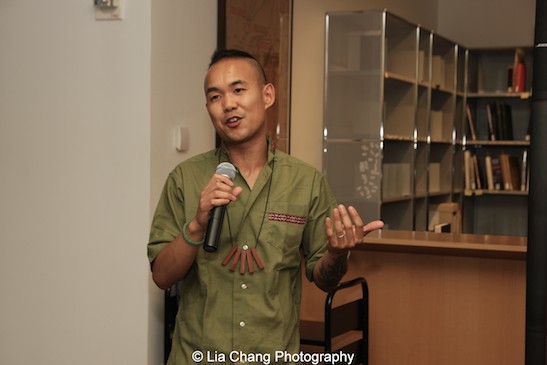
Chang: What is the purpose of a WikiApa Edit-a-thon?
Luis: Wikipedia is one of the most referred to sources of information online, but one of the issues is that a lot of times for underrepresented communities, things, moments, people we find are important, are underrepresented. It’s not that Wikipedia doesn’t want that information on there, quite contrarily we do want that information and we need to be represented as editors. These events are not only put on to not only populate Wikipedia with more diverse content, but also to introduce folks who have never edited Wikipedia before to do it in a space where we are sitting on a nice balcony with wine being provided.

There are Asian Pacific American artists who may not have been historically signed with major record labels, or are not represented in Hollywood or television shows. By coming today and starting stub articles on Asian Pacific American artists, we are creating an Asian American presence on Wikipedia. The hope is that we start to see that things that might not have been considered valid sources in the past are now because we have such a wide access to digital resources.

We are really starting from the beginning with a lot of this. On www.wikiapa.tumblr.com, you’ll find a list of musicians, performance artists and visual artists from different Asian Pacific American communities who may have made a major impact, but perhaps on a grass roots level. You may not find them in New York Times write-ups, or featured on MTV. Fortunately, we have institutions like the Smithsonian and the Museum of Modern Art backing us up. We see something like this WikiAPA edit-a-thon today as a starting ground. If some of these artists that are represented on this website don’t have much other representation, then we start working with grassroots media. We start working with more established media to create the types of sources that get cited on Wikipedia.

Chang: What is your role as curator of Digital & Emerging Media at the Smithsonian Asian Pacific American Center?
Luis: My role as curator is thinking about untraditional space as the terrain for Asian Pacific American heritage through the lens of the museum. We are doing that because there is no national museum of Asian Pacific America in DC. We know that at least for the next couple of decades, we’re really looking at being at the helm of where museums are going in the digital age. We’ve seen how press has gone digital, and anticipate how exhibitions and museums will as well.

If we are looking at the Internet as a terrain for Asian Pacific American heritage, it is not that great of a terrain right now. If you Google Asian and search images, it’s kind of abhorrent. On top of that, there is a lot of underrepresentation on some our major information outlets like Wikipedia. WikiAPA is a part of an ecosystem of initiatives that we are facilitating in order to improve the terrain of Asian American information and heritage. Part of that includes giving people a better understanding of how to tweak the metadata on their websites and blogs so that when people search for Asian and Asian American stuff, those things have a better chance of showing up as well.

Chang: How do you tweak the metadata?
Luis: As an example, websites that promote mail order brides. They do this metadata dumping where in the code of their site, they will have Asian, Asian Women, Oriental, East Asian, and all this stuff so that no matter what you search that’s anywhere within the ethos of searching for Asian stuff, the first thing you will end up with is those search results. But then in contrast, if you are talking about an Asian American organization at a university, we understand more nuanced terms like Asian American, Asian Pacific American. The problem is if I am somebody who is from somewhere where there are not a lot of Asian Americans, and if I am genuinely interested in learning more about Asian Americans, but I am not familiar with the terminology, likely the term someone like me would type in would be Oriental. With that you don’t end up with any of the more progressive types of web presence of APAs. There’s a disconnect. Part of changing that ecosystem is doing things like tagging or naming files that are more conducive to matching those search results. Even we don’t like being called Oriental, we might want to include that in our metadata, so that when someone types Oriental, it shifts the culture so that maybe Google will at someone point say, “Did you mean Asian?” So we slowly change the landscape.
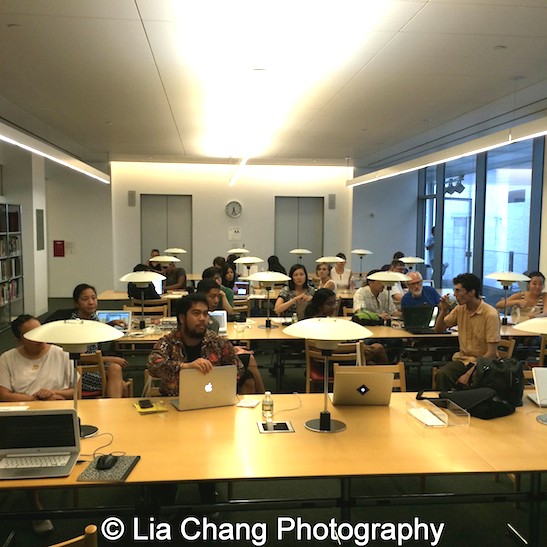
If you were trying to build a museum in a city that is blighted or is a hostile environment for the community that you want to outreach to, before you can start collecting for the museum or building the museum, you need to do things so that we improve the community as a safer space for people to actually want to have it be their museum playground. That’s what we are doing with the internet right now. WikiAPA is part of that.

Chang: What was last year’s WikiAPA like?
Luis: Last year we did it in seven cities. This year we are doing it in 10 cities in the U.S. and three cities in Asia. We’re looking to do this regularly, and each time we do it, we learn a bit more and create more framework, so that eventually people can host their own Wikipedia edit-a-thons as well.

One of the first things we try to do when we launch a WikiAPA in a city that has never done it before is to do a little bit of matchmaking. We find a venue. We find an expert in the field of Asian American art or whatever it is that we are focusing on, and we find Wikipedia experts. When we get that trinity of people together with logistical, scholarly and technical aspects covered, we try to encourage the cities to focus on aspects of the field of what they might gravitate towards. For instance with Chicago, there has been a very rich Asian American art scene, which is rare to find in the Midwest. So we are encouraging them to focus on local artists. At The Wing Luke, there’s a lot of connection between art and activism. So they’re expanding their topic from Asian American art to Asian American art and activism. In Washington DC, we’re focusing on artists who have gone through Smithsonian Archives Library of Congress. Depending on the cities, we keep it pretty loose, so that folks can really work on something they feel passionate about.
For more information about the #WikiAPA series, visit Smithsonian APA – Wiki or follow #WikiAPA on Twitter.
Sources: https://en.wikipedia.org/wiki/Wikipedia:Meetup/Wikipedia_APA
http://smithsonianapa.org/wiki/
After New York and Washington D.C., the Smithsonian Asian Pacific American Center is hosting a month-long series of #WikiAPA meetups across the U.S. and in Asia including Los Angeles/Pasadena (9/13), Seattle (9/17), Oakland (9/18), Toyama City, Japan (9/20), Hong Kong (9/22), Bangkok (9/26), Chicago (9/29), San Diego (9/30), Minneapolis (10/1), as well as remotely, with participants taking part from all throughout the world. More are still being added.




Los Angeles / Pasadena
- Date: Sunday, September 13, 2015
- Time: 12:00 pm – 5:00 pm
- Location: Art Center College of Design, James Lemont Fogg Memorial Library
Oakland
- Date: Friday, September 18, 2015
- Time: 5:00 pm – 9:00 pm PDT
- Location: Oakland Museum of California
- RSVP: Eventbrite
Seattle
- Date: Thursday, September 17, 2015
- Time: 5:00 pm – 8:00 pm
- Location: Wing Luke Museum of the Asian Pacific American Experience, at 719 S King Street
- Public transit: Link Light Rail (International District/Chinatown), King County Metro
- Proposed scope of work
- Please RSVP: here
Click here to RSVP for Toyama City, Japan at the Library Fair and Forum on Sunday, September 20, 2015.
Hong Kong- City University w/ ArtsFuture on Tuesday, September 22, 2015.
Click here to RSVP for Austin, TX, at the Asian American Resource Center w/ the UTexas chapter of the Association for Information Science & Technology, on Saturday, September 26, 2015.
Bangkok
- Date: Saturday, September 26, 2015
- Time: 9:00 am – 3:00 pm
- Location: dtac headquater, Chamchuri Square [1]
- Public transit: MRT (Bangkok)
- Please RSVP: m:Wikimedians in Thailand/2015 Smithsonian APA
Click here to RSVP for Chicago’s #WikiAPA on Tuesday, September 29, 2015.
San Diego
- Date: Wednesday, September 30, 2015
- Time: 2:00 pm.– 5:00 pm PST
- Location: Geisel Library, University of California San Diego
- RSVP: WikiAPA Editathon 2015 in San Diego, California
Click here to RSVP for Minneapolis, MN at the Open Book w/ The Loft on Thursday, October 1, 2015.

Lia Chang is an award-winning filmmaker, a Best Actress nominee, a photographer, and an award-winning multi-platform journalist. Lia has appeared in the films Wolf, New Jack City, A Kiss Before Dying, King of New York, Big Trouble in Little China, The Last Dragon, Taxman and Hide and Seek. She is profiled in FebOne1960.com Blog, Jade Magazine and Playbill.com.

